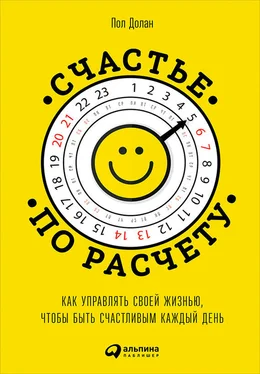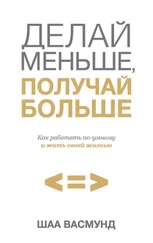Hosoda M., Stone-Romero E.F., Coats G. The effects of physical attractiveness on job-related outcomes: a meta-analysis of experimental studies. Personnel Psychology 2003; 56: 431–62.
Krueger A.B., Mueller A.I. Time use, emotional well-being, and unemployment: evidence from longitudinal data. American Economic Review 2012; 102: 594–99; Knabe A., Raetzel S., Schoeb R., Weimann J. Dissatisfied with life but having a good day: time-use and well-being of the unemployed. Economic Journal 2010; 120: 867–89.
Weiss A., King J.E., Inoue-Murayama M., Matsuzawa T., Oswald A.J. Evidence for a midlife crisis in great apes consistent with the U-shape in human well-being. Proceedings of the National Academy of Sciences 2012; 109: 19949–52.
O’Brien E., Konrath S.H., Gruehn D., Hagen A.L. Empathic concern and perspective taking: linear and quadratic effects of age across the adult life span. Journal of Gerontology B: Psychological and Social Sciences 2013; 68: 168–75.
Stone A.A., Schwartz J.E., Broderick J.E., Deaton A. A snapshot of the age distribution of psychological well-being in the United States. Proceedings of the National Academy of Sciences 2010; 107: 9985–90.
Carstensen L.L., Turan B., Scheibe Sэ, et al. Emotional experience improves with age: evidence based on over 10 years of experience sampling. Psychology and Aging 2011; 26: 21–33.
Dolan P., Kudrna L. More years, less yawns: fresh evidence on tiredness by age and other factors. Journal of Gerontology B: Psychological and Social Sciences 2013.
Ockham W. Philosophical writings: a selection. Hackett, 1990.
DellaVigna S. Psychology and economics: evidence from the field. Journal of Economic Literature 2009; 47: 315–72.
Hossain T., Morgan J. Plus shipping and handling: revenue (non) equivalence in field experiments on eBay. Advances in Economic Analysis & Policy 2006; 5.
Davenport T.H., Beck J.C. The attention economy: understanding the new currency of business. Harvard Business Press, 2002.
Kaplan S., Berman M.G. Directed attention as a common resource for executive functioning and self-regulation. Perspectives on Psychological Science 2010; 5: 43–57.
Maguire E.A., Gadian D.G., Johnsrude I.S., et al. Navigation-related structural change in the hippocampi of taxi drivers. Proceedings of the National Academy of Sciences 2000; 97: 4398–4403.
Саймонс Д., Шабри К. Невидимая горилла, или История о том, как обманчива наша интуиция. – М.: Карьера Пресс, 2011.
Drew T., Vх M.L.H., Wolfe J.M. The invisible gorilla strikes again: sustained inattentional blindness in expert observers. Psychological Science 2013.
Haynes A., Weiser T., Berry W., Lipsitz S., Breizat A., Dellinger E., Herbosa T., et al. A surgical safety checklist to reduce morbidity and mortality in a global population. New England Journal of Medicine 2009; 360: 491–99.
Harmer M. The case of Elaine Bromiley: independent review on the care given to Mrs Elaine Bromiley on 29 March 2005. Clinical Human Factors Group, 2005.
Stanton N.A., Young M.S. Driver behaviour with adaptive cruise control. Ergonomics 2005; 48: 1294–1313; Vahidi A, Eskandarian A. Research advances in intelligent collision avoidance and adaptive cruise control. IEEE Transactions on Intelligent Transportation Systems 2003; 4: 143–53.
Laycock T. Mind and brain. Sutherland & Knox, 1860.
Dijksterhuis A., Nordgren L.F. A theory of unconscious thought. Perspectives on Psychological Science 2006; 1: 95–109.
Канеман Д. Думай медленно… Решай быстро. – М.: АСТ, 2013.
Ритцер Дж. Макдональдизация общества 5. – М.: Праксис, 2011.
Zhong C.B., DeVoe S.E. You are how you eat: fast food and impatience. Psychological Science 2010; 21: 619–22.
Hill R.A., Barton R.A. Psychology: red enhances human performance in contests. Nature 2005; 435: 293.
North A.C., Hargreaves D.J., McKendrick J. The influence of in-store music on wine selections. Journal of Applied Psychology 1999; 84: 271.
Alter A. Drunk tank pink: and other unexpected forces that shape how we think, feel, and behave. Penguin, 2013.
Bojinov H., Sanchez D., Reber P., Boneh D., Lincoln P. Neuroscience meets cryptography: designing crypto primitives secure against rubber hose attacks. Proceedings of the 21st USENIX Security Symposium 2012: 129–41.
Bargh J.A. The automaticity of everyday life. Lawrence Erlbaum, 1997.
Wilson T. Strangers to ourselves: discovering the adaptive unconscious. Harvard University Press, 2002.
Lally P., Gardner B. Promoting habit formation. Health Psychology Review 2013; 7: S137–S158.
Margolis S.V. Authenticating ancient marble sculpture. Scientific American 1989; 260: 104–10; Гладуэлл М. Сила мгновенных решений. Интуиция как навык. – М.: Альпина Паблишер, 2013.
Genakos C., Pagliero M. Risk taking and performance in multistage tournaments: evidence from weightlifting competitions. Centre for Economic Performance, CEP Discussion Paper No. 928, 2009.
Stroop J.R. Studies of interference in serial verbal reactions. Journal of Experimental Psychology 1935; 18: 643.
MacLeod C.M. Half a century of research on the Stroop effect: an integrative review. Psychological Bulletin 1991; 109: 163.
Tuk M.A., Trampe D., Warlop L. Inhibitory spillover increased urination urgency facilitates impulse control in unrelated domains. Psychologica Science 2011; 22: 627–33.
Dolan P., Galizzi M. Because I’m worth it: experimental evidence on the spill-over effects of incentives. Centre for the Study of Incentives in Health. In press.
Mallam K.M. Contribution of timetabled physical education to total physical activity in primary school children: cross sectional study. British Medical Journal 2003; 327: 592–93.
Metcalf B. Physical activity cost of the school run: impact on schoolchildren of being driven to school (EarlyBird 22). British Medical Journal 2004; 329: 832–33.
Monin B., Miller D.T. Moral credentials and the expression of prejudice. Journal of Personality and Social Psychology 2001; 81: 33–43.
Читать дальше
Конец ознакомительного отрывка
Купить книгу












